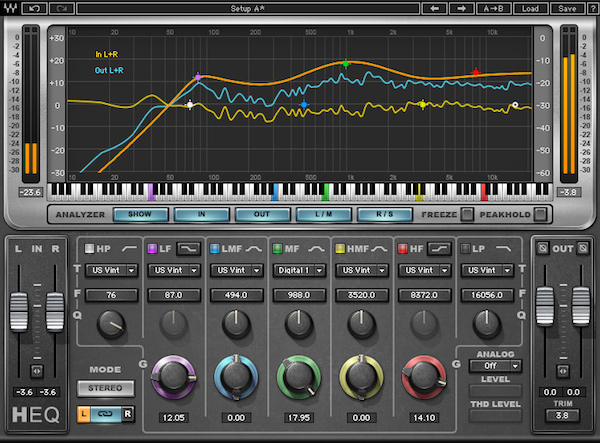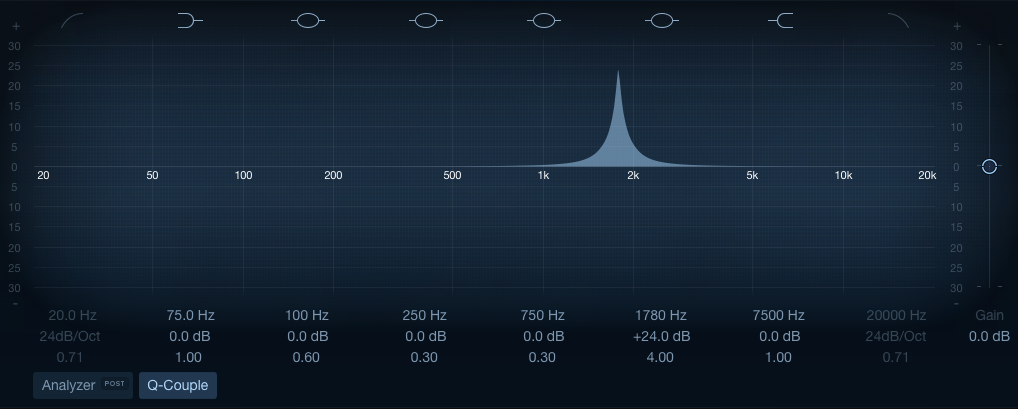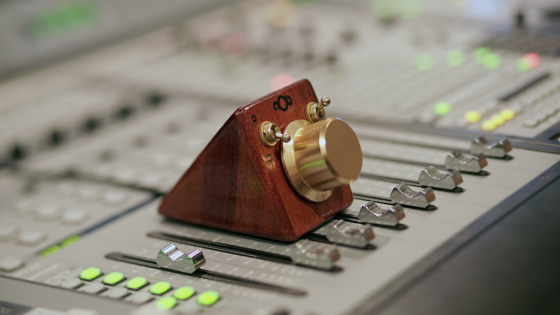3. Use a narrow peak boost to identify problem areas
You know better now than to adjust your EQ in isolation, but you need to know where to start. Trying to find trouble frequencies in a dense mix can be difficult. Thankfully, there’s an easy way to figure out exactly which frequencies are causing your problems!
Place a regular EQ on your track. No fancy-pants EQs this time around. You want your EQ to be as clean and sterile as possible. Take one bell curve EQ, pull it up to 15-25dB, and tighten the Q until you have a thin spike. Make sure to adjust your output gain to not harm your speakers.
At this point you’ll probably hear a horrifying, shrill sound. That’s what you’re after. Next, take that EQ band and drag it up and down the frequency spectrum slowly. As you listen, you should be able to hear distinct blooms in the sound. Make note of these places. They’re going to be the ones you want to cut. And what’s the best technique for balancing EQ?
Important things happen in Pacific Northwest nightlife, and DMNW will send you alerts!














































